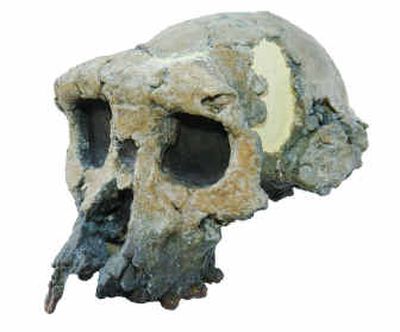Studies back finding on human-like fossil

A virtual face-lift, two new jawbones and a partial set of teeth have solidified the stature of Chad’s most famous fossilized resident, according to a pair of studies that will be published today.
A nearly 7 million-year-old fossilized skull, nicknamed “Toumai” and sometimes dubbed “the old man of Chad,” made headlines in 2002 when researchers called it humanity’s earliest known ancestor, pre-dating other human-like fossils such as Ethiopia’s “Lucy” by millions of years.
Most scientists accepted Toumai’s new position on the family tree, solidly on the human branch but within evolutionary sight of the point at which apes and humans diverged from a common ancestor. A few dissenters, however, argued that the skull described by French paleontologist Michel Brunet and colleagues was too fractured to yield any firm conclusions.
Two new studies by Brunet and colleagues in the journal Nature seek to settle the debate through examination of two lower jaws and assorted teeth also assigned to the creature, Sahelanthropus tchadensis, and through a computer-assisted reconstruction of its face.
Co-author Christoph Zollikofer, a paleontologist at the Universitat Zurich-Irchel in Switzerland, said the original skull is remarkably well preserved, if extensively fractured.
“It’s as if you sit by accident on an Easter egg,” he said. “So everything is fractured, and distorted, but everything is there.”
Zollikofer said it’s not possible to manually correct that distortion, so researchers analyzed the newly found bones and virtually reconstructed the old ones to determine the dimensions of the skull and face.
The team concluded that Toumai’s teeth were more human than ape-like, and its face was at a nearly vertical plane relative to the foramen magnum, a hole in the skull connecting the spinal cord to the brain. That feature is more akin to modern humans than to apes, Zollikofer said. “And in a way, that’s one consequence of bipedalism,” or walking upright.
“If a dog puts himself on his hind legs, its head looks toward the sky,” he said, but the orientation would be awkward for animals that normally walk on two legs. “The evolutionary solution is to make the face more vertical relative to the skull.”
Toumai’s brain case is only slightly larger than a chimp’s, however, suggesting it lived relatively soon after apes and humans went their separate ways.